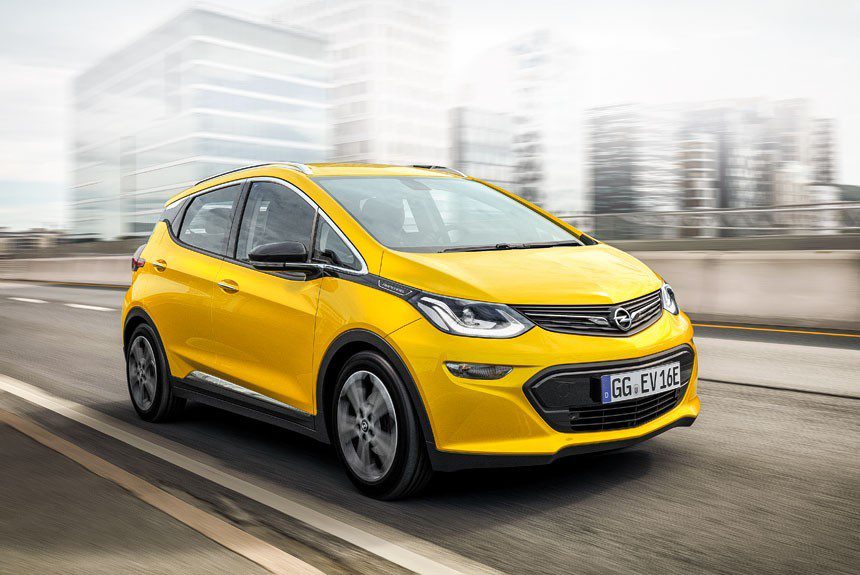
Test drive Opel Ampere
Content
We are, of course, talking about buying an electric car. The previous generation had (at least on paper, it wasn't really anything serious anyway) a range that was too small or (Tesla's) otherwise good range but too high a price. 100 thousand is not a number that everyone can afford.
Lower price for more coverage
Then came (or is still making its way onto our roads) the current generation of electric vehicles with actual ranges of over 200 kilometers. e-Golf, Zoe, BMW i3, Hyundai Ioniq… 200 kilometers in almost any conditions, and even more than 250 (and more) in good conditions. Even for our situation, more than enough, except for extremely long trips – and these can be solved in other ways: German buyers of the new e-Golf thus receive (already included in the price of the car upon purchase) a classic car for two or three weeks a year – exactly enough for several hundred miles of trails when we go on vacation.
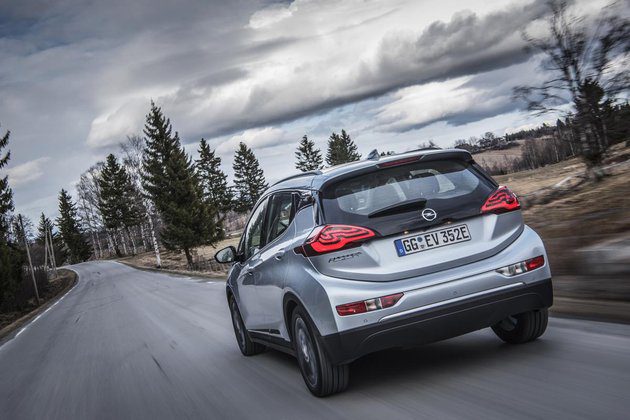
At Opel, however, given the history of electric vehicles, they've gone even further. In the previous generation of electric vehicles, we still talked about a range of less than 200 kilometers and a price of about 35 thousand (or even more), but now the numbers have reached a new dimension. 30 thousand 400 kilometers? Yes, Ampera is already pretty close to that. The approximate price in Germany is about 39 thousand euros for the entry-level model, and if we subtract the Slovenian subsidy of 7.500 euros (importers are trying to raise it to 10 thousand), we get a good 32 thousand.
520 kilometers?
And reach? 520 kilometers is the official number that Opel boasts. In fact: 520 is the number they need to talk about, since that's the range according to the currently valid but hopelessly outdated NEDC standard. But since EV manufacturers don't want to convince their customers of the impossible, it's long been customary to add realistic ranges, or at least the ones a car needs to reach under the upcoming WLTP standard, in the same breath, just a little quieter. And for Ampera, this is about 380 kilometers. Opel has taken things a step further by developing a simple online range calculation tool.
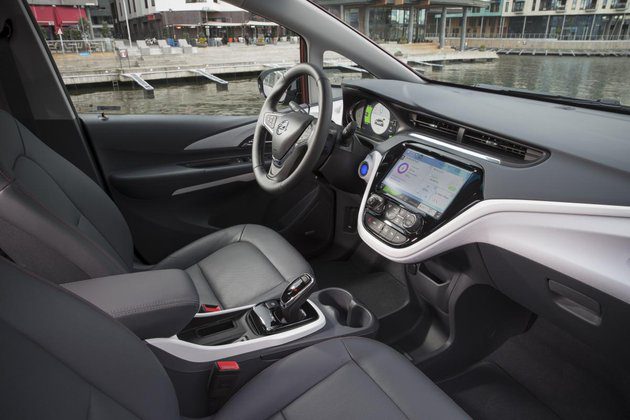
And how did they reach these numbers? The most important reason is that the Ampera and its American brother, the Chevrolet Bolt, were designed as eclectic cars from the outset, and designers could correctly predict how many batteries they would fit into a car from the start. at a reasonable price. The problem with batteries is no longer so much in their weight and volume (especially with the latter, with the correct shape of the car and battery, you can do small miracles), but in their price. What would have helped to find a place for a huge battery if the price of a car was then unattainable for most?
Batteries in every accessible corner
But still: GM engineers have taken advantage of almost every corner available to "pack" batteries into the car. The batteries are installed not only in the underbody of the car (which means that the Ampera is closer in design to crossovers than the classic station wagon limousine), but also under the seats. Therefore, sitting in the back can be slightly less comfortable for taller passengers. The seats are high enough that their head can quickly get uncomfortably close to the ceiling (but some attention is also required when sitting in a car). But in classic family use, where tall adults don't usually sit in the back, there is plenty of room. It's the same with the trunk: counting on a little over 4,1 liters for a 381-meter car like the Ampera is unrealistic, even if it's not an electric car.

The lithium-ion battery has a capacity of 60 kilowatt-hours. The Ampera-e is capable of fast charging at 50 kilowatt CSS fast charging stations (charges at least 30 kilometers in 150 minutes), while conventional (alternating current) charging stations can charge a maximum of 7,4 kilowatts. In practice, this means that you can fully charge the Ampero at home overnight using a suitable electrical connection (meaning three-phase current). With a less powerful, classic single-phase connection, it will take about 16 hours or more to charge (which still means the Ampera will charge at least 100 kilometers per night, even in the worst case.
A real electric car
Opel wisely decided that the Ampera should be driven like a real electric car. This means that you can only control it with the accelerator pedal, so to speak, without using the brake pedal - the shift lever only needs to be moved to the L position, and then with the pedal fully down, the regeneration is strong enough to allow everyday driving. follow without using the brakes. If that's not enough, a switch is added on the left side of the steering wheel to trigger an extra regeneration, and then the Ampera-e "brakes" to 0,3 G deceleration while charging up to 70 kilowatts of batteries. power. After only a few miles, everything becomes so natural that the driver begins to wonder why there are other ways at all. And by the way: in collaboration with a smartphone, Ampera knows how to plan a route in such a way (this requires the use of the MyOpel app) that it also anticipates the necessary costs and the route passes by suitable (fast) charging stations. .
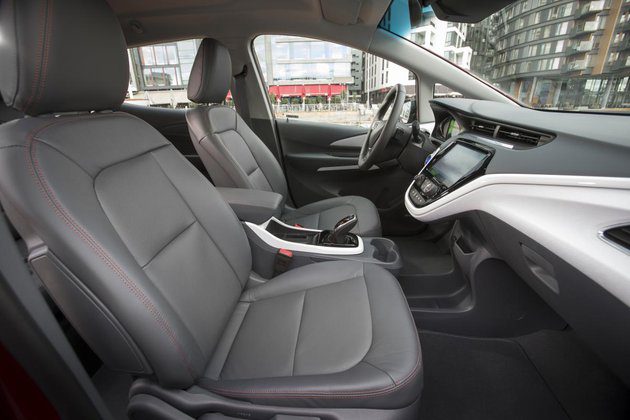
Enough comfort
Otherwise, long journeys to Ampere will not be tiresome. It is true that the standard Michelin Primacy 3 tires on rough Norwegian asphalt were quite loud (but they make up for that by being able to patch holes up to six millimeters in diameter on their own), but overall comfort is sufficient. ... The chassis is not the softest (which is understandable given the structure and weight of the car), but the Ampera-e makes up for it with a fairly precise steering wheel and quite dynamic cornering behavior (especially if the driver turns on sportier settings for the transmission and steering wheel by pressing Sport). There are also almost enough assistance systems, including automatic braking (which also reacts to pedestrians), which completely stops the car at speeds up to 40 kilometers per hour and works at speeds up to 80 kilometers per hour. Interesting: in cars and in the list of auxiliary systems, we lacked active cruise control and LED headlights (Opel chose a bi-xenon solution).
The seats are firmer, not the widest, otherwise comfortable. They are very thin, which means that there is more room in the longitudinal direction than you might expect. Materials? The plastic is mostly hard, but not of poor quality - at least in the main. Previously, on the contrary, most of the plastic in the cabin was subjected to a pleasant surface treatment, only there on the door, where the driver’s elbow can rest, you still want something soft. The image is the part where the knees rest. A corollary to the fact that the Ampera-e is an electric car with batteries under the passenger compartment is that the passengers' feet are not obstructed by thresholds when entering the passenger compartment.
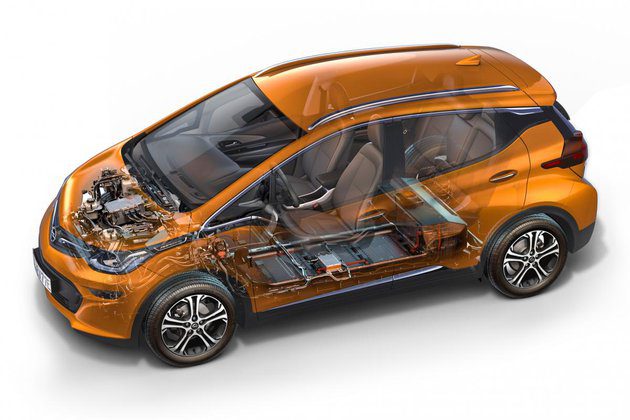
There is plenty of room for small things, and the driver will easily get behind the wheel. The space in front of it is dominated by two large LCD screens. The one with the sensors is completely transparent (there is less information, they are better distributed and more transparent than the Ampera), and what is displayed on it can be adjusted. The infotainment center screen is by far the largest you can find in an Opel (and also the largest, except when it comes to Tesla), and of course the touchscreen. The Intellilink-e infotainment system works great with smartphones (it has Apple CarPlay and AndroidAuto), offers all the information you need to know about the operation of the electric powertrain (and its settings) and is easy to read even when the sun is shining on it.
With us in a good year
It's probably not necessary to stress that it's possible to set when and how the Ampera charges through it, but we can point to the priority charging feature which allows the Ampera to charge up to 40 percent as fast as possible at a fast charging station and then turn off - great for stations fast charging, where providers unreasonably (and stupidly) charge for time rather than energy.
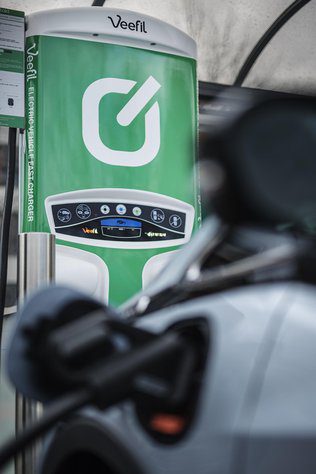
Ampera will not appear on the Slovenian market until next year, as the demand for it far exceeds the supply. Sales in Europe started recently, first in Norway, where more than XNUMX orders were received in just a few days, then followed (in the fall, not in June, as originally planned) Germany, the Netherlands and Switzerland. It is a pity that Slovenia is not among these countries, which are otherwise among the leaders according to the criteria used to define the first markets (infrastructure, subsidies ...).
Car and mobile phone
With Ampera, the user can set when the car should be charged (for example, charge only at a low cost), but cannot set the time when the car's heating or cooling must be turned on so that it is on departure. (when disconnected from the charge) has already warmed up or cooled down to a suitable temperature. Namely, Opel has decided (correctly, in fact) that this is the job that the new version of the MyOpel smartphone app should do. Thus, the user can turn on preheating (or cooling) from afar, a few minutes before he gets into the car (say, at home during breakfast). This ensures that the car can always be ready, but at the same time, it does not happen that due to a later (or earlier) departure than planned, the user will be unprepared or consuming too much energy. This is especially important for heating, since Ampera does not have (even as an accessory) a heat pump, but a more energy-intensive classic heater. When asked why this is the case, Opel made it clear: because the price equation doesn't work, and besides, the energy savings are actually far less than users assume - over a fairly wide range of situations (or years). The heat pump is working. not have such an advantage over a classic heater to justify a higher price in a car with such a powerful battery as the Ampera-e. But if it turns out that customer interest in a heat pump is really high, they will add it, they say, because there is enough space in the car for its components.
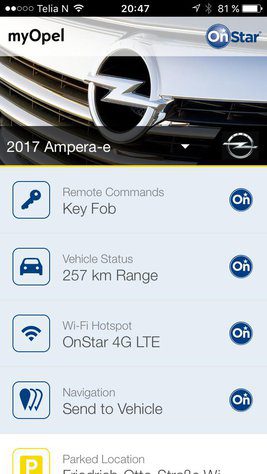
In addition to controlling the heating (even if the car is not connected to the charging station), the application can display the status of the vehicle in which it is parked, it allows you to plan a route with intermediate charging and transfer this route to the Intellilink system, which navigates there using the Maps or Google smartphone apps. Cards).
Battery: 60 kWh
The battery was developed by engineers in collaboration with cell supplier LG Chem. It consists of eight modules with 30 cells and two with 24 cells. The cells are installed longitudinally in modules or a wagon, 288 cells (each 338 millimeters wide, a good centimeter thick and 99,7 millimeters high) along with the associated electronics, cooling (and heating) system and housing (which uses high-strength steel). weighs 430 kilograms. The cells, combined into groups of three (there are 96 such groups in total), are capable of storing 60 kilowatt-hours of electricity.
text: Dusan Lukic · photo: Opel, Dusan Lukic

